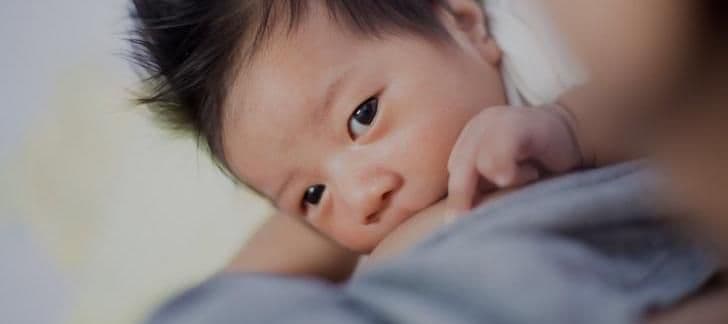Future Cognitive Development Reflected in Newborn’s Eyes
Women's Health News
Obie Editorial Team
It often seems that many new parents can’t take their eyes off their newborn baby’s face. To catch the baby looking back is indescribable joy. A new study from Finland suggests there’s more than joy to be found in a newborn’s eyes. A baby’s gaze is a signal of how well his or her visual cognitive abilities will develop throughout early childhood, according to the study.
Drs. Sampsa Vanhatalo, adjunct professor of clinical neurophysiology, and Aulikki Lano, a child neurologist, worked with a team of researchers from the University of Helsinki and Helsinki University Central Hospital to determine if a newborn’s ability to visually fixate on an object, such a parent’s face, is a reliable predictor of future neurocognitive health. They discovered a clear link between baby’s gaze and baby’s brain development.
The Helsinki research team studied two groups of newborns under care at the hospital’s pediatrics unit:
- One group of 1,410 infants born in 1985 and 1986.
- A second group of 57 infants born in 2006 and 2007.
The 1985-86 Phase of Study
These children were assessed for visual fixation (VF) and gaze behavior (GB) as newborns. Of these children:
- 948 had been hospitalized for various reasons.
- 20% were born prematurely.
At age 5, each child was assessed for visual-motor abilities and general reasoning. The findings at age 5 matched the VF and GB assessments in infancy. Those with strong VF and GB as newborns had fewer difficulties with cognitive skills five years later.
The 2006-07 Phase of Study
Of the 57 newborns in this phase of study, 42 were described as extremely preterm infants. As each child reached term age, he or she was tested for visual abilities and each underwent a brain scan using advanced magnetic resonance imaging (MRI).
When each child was 2 years old, an assessment of neuropsychological health was made. The findings were consistent with the first phase of study: newborns with no visual disabilities developed no neuropsychological concerns by age 2.
The MRI scans also revealed extensive neurological networks associated with visual and cognitive processing and motor skills development in the babies with no visual impairments at birth. The babies with the strongest visual fixations and gaze behaviors had more extensive neuro-networks than those with poorer visual acuity in infancy.
The research team suggests their findings can become a reliable predictor of future cognitive development at a much earlier age than the diagnostic tools currently in use. It is standard practice today to look for neurocognitive problems only after symptoms of dysfunction develop in the early years of childhood. If these problems could be identified during infancy, when the brain is undergoing a massive degree of development, the research team suggests appropriate interventions can be devised to harness the power of the developing brain to correct problems before they become problematic.
Sources:
- Vanhatalo, Sampsa, et al. "Visual Fixation in Human Newborns Correlates with Extensive White Matter Networks and Predicts Long-Term Neurocognitive Development." The Journal of Neuroscience 35.13 (2015): 4824-29. Web. 8 Apr. 2015.
- "Many things can be read in a newborn’s gaze." University of Helsinki News Release. University of Helsinki, 24 Mar. 2015. Web. 8 Apr. 2015.
- "Eye Facts...Your Baby's Eyes." University of Illinois College of Medicine at Chicago. University of Illinois College of Medicine at Chicago, n.d. Web. 8 Apr. 2015.









